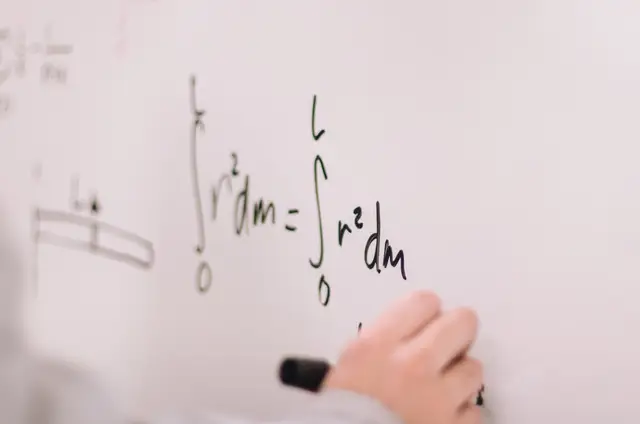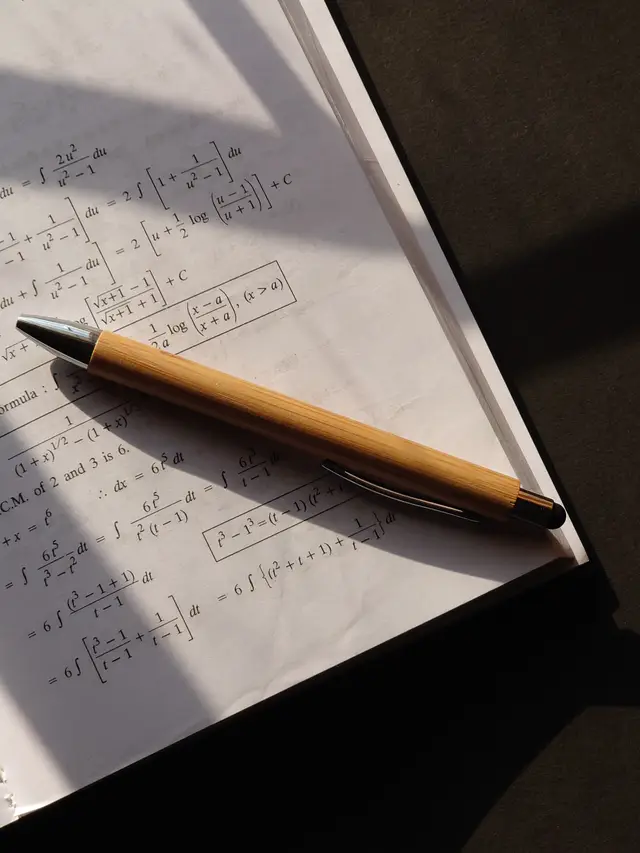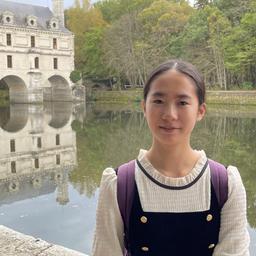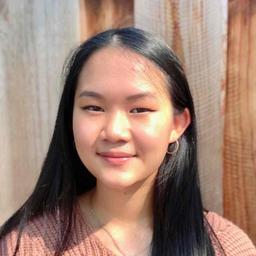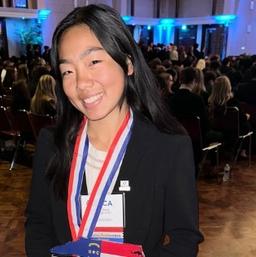Pure mathematics, which involves exploring abstract mathematical concepts, can lead to careers in academia, where one can teach and conduct research. Some theoretical math topics and related careers include:
Number theory delves into the properties of integers and rational numbers, with applications in cryptography and data security.
Algebraic geometry explores the interplay between algebraic equations and geometric shapes, offering career opportunities in computer graphics and physics.
Topology, centered on the properties of space and continuity, can lead to a career in data analysis or materials science.
Abstract algebra's study of algebraic structures like groups and rings can lead to work in cryptography and coding theory.
Mathematical logic, which involves formal logic and proof theory, is used in artificial intelligence.
Differential geometry, exploring the geometry of curves and surfaces, has applications in theoretical physics, robotics, and computer graphics.
Functional analysis, centered on vector spaces and operators, offers opportunities in quantum mechanics and data analysis.
Applied mathematics uses mathematical principles to solve real-world problems. Some examples include:
Mathematical modeling involves creating mathematical representations of real-world phenomena and is relevant in fields like epidemiology and climate science.
Operations research focuses on optimization and decision-making in logistics, finance, and transportation.
Cryptography combines mathematics with computer science to secure communication and data, essential in cybersecurity.
Actuarial science applies mathematical and statistical techniques to assess financial risks, commonly in the insurance industry.
Quantitative finance uses mathematical models to analyze and predict financial markets, often leading to careers in finance.
Data science and machine learning involve mathematical and statistical techniques to analyze vast datasets, with applications in diverse industries.
Once you figure out whether you’re more of a pure math or applied math person, you can take time to explore the problems that interest you the most. Start by reading some good books on the subject. Take Math courses in your high school. Try a deep dive into your subject with a summer mathematics program. Or find a mathematics mentor, either locally or virtually, who can help you start your own independent research project. They can also provide guidance and insights into the profession. Here are more details on actions you can take.
1. Take a Class in High School
In high school, students typically have the opportunity to take a sequence of math courses that build on each other. The specific courses offered can vary by school and location, but a common progression of math classes in the United States, for example, includes the following:
Algebra 1: Algebra 1 is often the first high school math course and introduces fundamental algebraic concepts. Students learn to work with variables, equations, and basic algebraic operations. Some schools cover Algebra in middle school and allow accelerated students to skip straight to Geometry their Freshman year.
Geometry: Geometry focuses on the study of shapes, angles, and the properties of space. It builds upon algebra skills and introduces geometric theorems and proofs.
Algebra 2: Algebra 2 delves deeper into algebraic concepts, including quadratic equations, functions, and inequalities. It further develops algebraic problem-solving skills.
Trigonometry: Trigonometry introduces students to trigonometric functions, identities, and applications. It is often taught in conjunction with Algebra 2.
Pre-Calculus: Pre-Calculus covers a wide range of mathematical topics, including advanced algebra, trigonometry, and introductory calculus concepts. It prepares students for more advanced math courses.
Calculus (AP or IB): Calculus is the study of rates of change and accumulation, and it is typically divided into Calculus AB (single-variable) and Calculus BC (multivariable). This is an advanced course and may be taken as an AP or IB course for college credit.
These courses provide a progression of mathematical knowledge, with each one building upon the concepts learned in the previous course. Algebra forms the basis for geometry and algebra 2, which, in turn, lay the foundation for pre-calculus. Pre-calculus serves as a prerequisite for calculus, the most advanced high school math course.
Beyond this sequence, high schools may offer additional courses such as Statistics and Discrete Mathematics, allowing students to explore their mathematical interests further.
2. Read a Book
Here are some foundational and contemporary mathematics books, providing a broad view of the subject and its real-world applications, as well as insights into the world of mathematical research.
Foundational books:
Elements by Euclid (circa 300 BCE): Euclid's "Elements" is a foundational work in geometry and mathematics, covering a wide range of geometric principles and proofs.
The Art of Problem Solving, Volume 1: The Basics by Richard Rusczyk (2006): This book is an excellent resource for high school students interested in mathematical problem-solving. It covers a variety of mathematical concepts and challenges.
Algebra by Michael Artin (1991): Michael Artin's "Algebra" provides a comprehensive introduction to algebra, a core area of high school mathematics.
Thought-provoking works:
The Princeton Companion to Mathematics by Timothy Gowers (2008): This book offers insights into advanced mathematics and its various branches, written by experts in the field.
How Not to Be Wrong: The Power of Mathematical Thinking by Jordan Ellenberg (2014): Jordan Ellenberg explores the practical applications of mathematics in everyday life, making advanced math concepts accessible.
The Man Who Knew Infinity by Robert Kanigel (1991): This biography of mathematician Srinivasa Ramanujan provides a fascinating look into his life and contributions to number theory.
Birth of a Theorem: A Mathematical Adventure by Cédric Villani (2015): This book chronicles the journey of mathematician Cédric Villani as he works on a groundbreaking mathematical proof, offering insights into the world of mathematical research.
The Joy of x: A Guided Tour of Math, from One to Infinity by Steven Strogatz (2012): Explores a wide range of mathematical topics, making them accessible to a general audience.
Love and Math: The Heart of Hidden Reality by Edward Frenkel (2013): Explores the connection between mathematics and the universe, providing a thought-provoking perspective on the subject.
Humble Pi: A Comedy of Math Errors by Matt Parker (2019): More of a fun pick, this book explores the often hilarious side of mathematical errors, miscalculations, and the consequences of getting numbers wrong in real-world situations, offering a lighthearted journey through the world of mathematical blunders.
Online Resources:
Websites like Khan Academy, YouTube, and Coursera offer video lessons on a wide range of math topics, often with interactive exercises and practice problems. Wolfram Alpha, Brilliant.org, and Desmos offer interactive math tools and resources. Some good math YouTube channels to check out are 3Blue1Brown (with its animations are excellent for understanding complex topics), Numberphile (covers a wide range of mathematical topics, presented by different mathematicians), and Mathologer. You can use math software like MATLAB, Mathematica, or GeoGebra for hands-on exploration of mathematical concepts. Math Stack Exchange and Reddit's r/learnmath are also great places to ask questions and learn from other students and math enthusiasts.
Engaging in math puzzles, games, and brain teasers can be another fun way to strengthen your math skills. Look for Sudoku, chess, or other math-related games.
3. Extracurricular Study
There are many extracurricular activities that can help you strengthen your mathematical skills and expose you to new and exciting concepts.
Math Competitions: The American Mathematics Competitions (AMC) or the Math Olympiad can sharpen your problem-solving skills and expose you to a wide range of mathematical concepts.
Chess Club: Chess is an excellent extracurricular activity for a high school student interested in mathematics. While it may not seem directly related to math, chess offers several benefits that can enhance your mathematical skills such as pattern recognition, strategic thinking, concentration, patience, and algorithmic thinking.
Science Clubs: Clubs like robotics, physics, and engineering can expose you to math-related topics and offer opportunities to apply math in hands-on projects.
Tutoring: Participate in outreach activities like tutoring younger students or conducting math workshops. Teaching others helps reinforce your own understanding of math.
Math Conferences and Lectures: Attend local math conferences and lectures, if available. These events can introduce you to advanced mathematical topics and real-world applications.
You could dive into math research in a pre-college program, a local community college, a competition, an internship, or a virtual program. A qualified adult math advisor or mentor is invaluable if you want to pursue your own project. While books are a good starting point, there’s nothing being able to consult a knowledgeable mathematician on complex problems.
Find research programs close to home
We’ll go into summer math programs in more depth in the next section, but if you want to find all types of established research opportunities close to home, our High School Student Research Opportunities Database is an excellent resource. Click on your state, then search based on your location, institution, event type (in-person or virtual), and tuition (paid or free).
Open Source Contributions
Contribute to open-source projects. It's a great way to gain real-world experience, collaborate with experienced mathematicians, and give back to the community. Websites like GitHub can help you find projects to contribute to. SymPy is an open-source Python library for symbolic mathematics, and you can help contribute to the development of this library. And SageMath is an open-source mathematics software system. Students can contribute code, documentation, or work on existing issues.
Work with a professor
If you have a clear idea of your passions, you can reach out to professors in your field to see if they are open to collaborating with you. Refer to our Guide to Cold-Emailing Professors (written by Polygence literature research mentor Daniel Hazard, a Ph.D. candidate at Princeton University).
Enter a competition
While not exclusively for mathematics, the Regeneron International Science and Engineering Fair (ISEF) is a prestigious science fair where students can present original research projects, including those in mathematics. A mathematics competition that allows students to work on challenging problems at their own pace over several months is the USA Mathematical Talent Search (USAMTS): And the most prestigious international mathematics competition is the International Mathematical Olympiad (IMO). While reaching the national team is difficult, the process of preparing for it can be a huge learning experience.
Engage in your own research project
Students with initiative and focus can opt to tackle research independently. Carly Taylor, a Stanford University senior who has completed several research projects this way, outlined a guide about how to write a self-guided research paper. By reading it, you’ll get a better understanding of what to expect when taking on this type of project.
Here are some top picks for summer math research programs. We chose them based on a combination of their affordability, name recognition, social opportunities, and academic rigor.
1. Program in Mathematics for Young Scientists (PROMYS)
Hosting institution: Boston University
Cost: $6,000
Format: In-person (Boston, MA)
Application deadline: Early March
This 6-week program is for high school sophomores to seniors who love math. Each day kicks off with Number Theory lectures followed by research projects done in the lab, advanced seminars, and guest lecturers. Some examples of past minicourses include Brouwer Fixed Point Theorem (in 2D), Linear Algebra, Generating Functions, Spectral Graph Theory, Surreal Numbers, LaTeX Workshop, and The Moon is a Planet and Other Astronomical Hot Takes. Financial aid is available.
2. Canada/USA Math Camp
Hosting institution: Various
Cost: $5,000
Format: In-person (Location varies from year to year)
Application deadline: Early March
If you find beauty in advanced mathematical ideas and would like to live and breathe math for 5 weeks, this summer program is for you. You’ll study with world-renowned researchers and hang out with students from all over the world who are just as passionate about math as you are. Some topics you’ll cover include Abstract Algebra, Topology, and Real Analysis, and past projects include building robots and crocheting a non-orientable surface. Financial aid is available.
3. Stanford University Math Summer Camp (SUMaC)
Hosting institution: Stanford University
Cost: $3,550-$8,250
Format: Online and In-person (Stanford, CA)
Application deadline: Early February
Go beyond the key concepts in math that you may learn in high school into more advanced topics (e.g., group theory) and then apply them to real-life applications (e.g., the Rubik’s Cube). This program is for high school sophomores and juniors who are curious about higher math. It’s offered as both an online program (3 weeks) or a residential program at Stanford (4 weeks). The online version is slightly less competitive in that 64 participants are chosen, but you can ask to be considered for the online program, the in-person, or both.
For a full list of summer programs be sure to our Top Math Summer Programs for High School Students article
A few of the summer programs we found were either paid or unpaid internships.
1. Simons Summer Research Program
Hosting institution: Stony Brook University
Cost: Paid fellowship
Format: In-person (Stony Brook, NY)
Application deadline: Early February
Also known as the Simon Fellowship, this prestigious and highly selective 8-week program matches about 30 students each year with a Stony Brook faculty mentor in the fields of science, math, computer science, and more. Students are selected based on their academic achievements, research potential, and personal qualities such as creativity, curiosity, and dedication. This program gives you a great opportunity to join research groups, produce a research abstract, work with a supportive community of peers and mentors, plus receive a stipend award.
2. Summer Internship Program (Spark SIP)
Hosting institution: Spark
Cost: Paid internship
Format: In-person (Seattle, WA)
Application deadline: Mid-March
The Spark SIP program connects high school students with specific industry experts and educators in the Greater Seattle area that will act as sponsors. In March, you can explore the Spark website for projects you might be interested in. You can apply for up to 5 different projects. If accepted to a project, you will then work on it over the course of the summer for an agreed-upon stipend and hours.
You can also check for opportunities at your local community college and read our full list of internship opportunities for students interested in mathematics.
A great math research topic often arises from questions that genuinely intrigue you—questions that make you curious and eager to delve deeper. Don't hesitate to blend disciplines or explore interdisciplinary connections, making your research both unique and personally meaningful. You can apply mathematical concepts to real-world scenarios, from analyzing sports data to understanding economic trends.
Polygence Scholars Are Also Passionate About
Here are some examples.
The mathematical properties of elections
In recent years, there has been a lot of discussion about which election mechanism is most effective at achieving various goals. Proposed mechanisms in United States elections include majority elections, the electoral college, approval voting, and ranked-choice voting. All of these mechanisms have benefits and drawbacks, and it turns out that no perfect election mechanism exists. Look at the work being done by mathematicians to understand when elections fail, and what can be done to improve them. Choose the strongest mechanism and use evidence to support your claim.
Idea by math research mentor Grayson
Impact of climate change on drought risk
Are you interested in environmental economics, risk analysis, or water resource economics?
You can use historical data on precipitation, temperature, soil moisture, drought indicators, and meteorological models that simulate atmospheric conditions to train a machine-learning model that can assess the likelihood and intensity of droughts in different regions under different climate scenarios. You can also explore your assessments' potential adaptation strategies and policy implications. This project would require some skills in data processing, machine learning, and meteorological modeling.
Idea by math research mentor Jameson
Measuring income inequality and social mobility
If you’re interested in the intersection of mathematics and public policy, here’s an idea. Use data from the World Bank, the Organization for Economic Co-operation and Development (OECD), and other sources to calculate the Gini coefficient and the intergenerational elasticity of income for different countries and regions over time. Explore the factors that influence these measures and their implications for economic development and social justice. You will need to have some skills in data collection, analysis, and visualization.
Idea by math research mentor Jameson
Check out even more project ideas in the 12 Math Project Ideas for Middle and High School Students post, which also talks about how to showcase your finished work.
You can also brainstorm your own project ideas. If you want support, the Pathfinders program gives you the chance to meet with three different mentors who specialize in your field of interest. You can discuss your project ideas with them, and they can help you grow your idea, discover new research techniques, and point the way to great resources and alternative options.
To get a sense of what’s possible, here are a few projects by some of our Polygence Math Scholars.
Review Paper on Quantum Algorithms
Ahmet's mathematical passion project offers detailed breakdowns of the first introduced quantum algorithm Deutsch-Jozsa, and the first quantum algorithm proven to be faster than classical algorithms, Grover’s Algorithm. It also includes a side-by-side comparison of the quantum algorithms and their classical counterparts. He uploaded his paper on Github and plans to submit it to an official publication soon.
Personal Finance Guide for Beginners
Anna’s finance project provides an overview of topics related to personal finance, covering tax and benefits, tax-deferred savings, interest rates, cost of living, investing, insurance, and housing to help young adults manage their savings. To further her understanding of how different areas of finance influence one's life consumption, she created a life consumption plan for a hypothetical person and produced a paper.
Because math is so foundational in the sciences, there are many different directions you can take with your math passion project. Decide which topics within mathematics most speak to you. Maybe you’re more interested in how math is used in sports statistics, how you can harness math to solve global problems, or perhaps you’re curious about how math manifests itself in the physical realm. Once you find a topic that interests you, then you can begin to dive deeper.
Keep in mind that some passion projects may require more technical skills, such as computer programming, whereas others may just explore theoretical concepts. The route you take is totally up to you and what you feel comfortable with, but don’t be afraid to pursue a project if you don’t currently have the technical skills for it. You can view it as an opportunity to learn new skills while also exploring a topic you’re excited about.
Outlining your research paper is also a useful way to make your research paper feel less overwhelming. Your research will generally include sections such as Materials, Methods, Data, Discussion, and Conclusion. You’ll also need to write an Introduction that opens with the problem you’re trying to solve, any existing research, and an overview of your research—all of which is best written about after you’ve finished your research and programming. Another important piece to your paper is your thesis statement. You can always come up with a preliminary or working thesis and then refine it or completely revise it as you learn more. You also may need to write an abstract. At its core, an abstract is a standalone piece of writing that offers a snapshot of the problem, methodology, findings, and conclusions. If you need more general guidance overall, here’s a great article on how to write a good research paper.
Finally, if you have some ideas and want to conduct math research with the guidance of a mentor, apply to be a part of our flagship mentorship program.
After you’ve created a clear and concise research paper outlining your problem statement, methodology, findings, and conclusions, it’s time to show it to the world. For a more polished presentation of your mathematical equations, use LaTeX or other such typesetting tools. Consider developing visual aids such as graphs, charts, and diagrams to enhance understanding. A well-designed poster summarizing key aspects of your research can be helpful if you’re presenting your work at science fairs or conferences. You should also write a compelling abstract to provide a concise overview. To really captivate your audience, try to emphasize real-world applications and the relevance of your research.
As for platforms on which to share your work, you could create a website or blog to share your research and even incorporate a video presentation to explain your project's significance and findings. Github is also a great place to show your computational work or to collaborate in ongoing open-source projects such as the Open Logic Project or the HoTT Book.
You could also participate in science fairs, math competitions, or conferences to present your work. Networking with peers and professionals can provide valuable feedback. Overall, a thoughtful combination of written, visual, and interactive elements will effectively communicate your passion and findings.
For a full list, check out our 20 Best Math Competitions for High School Students.
















